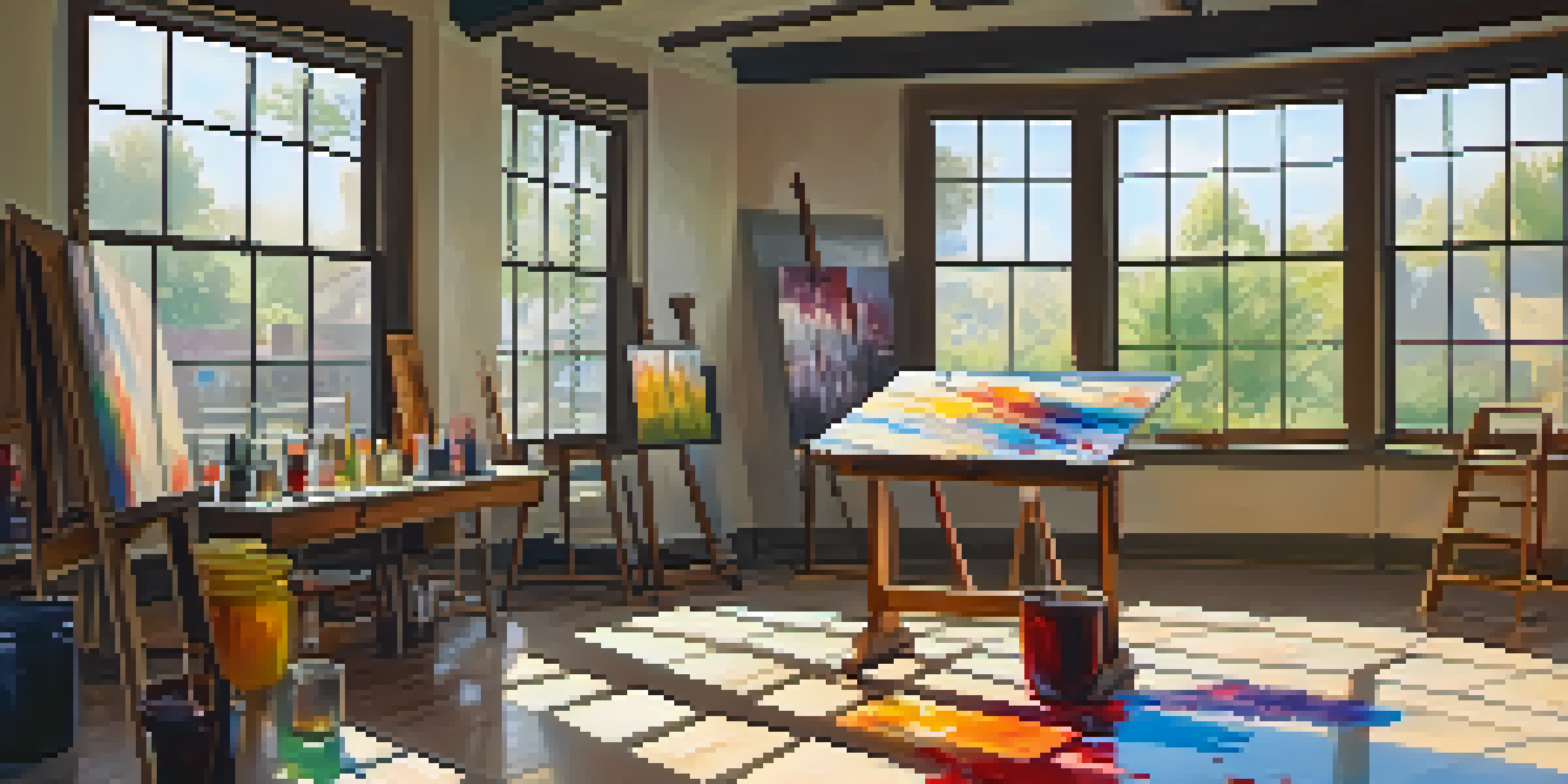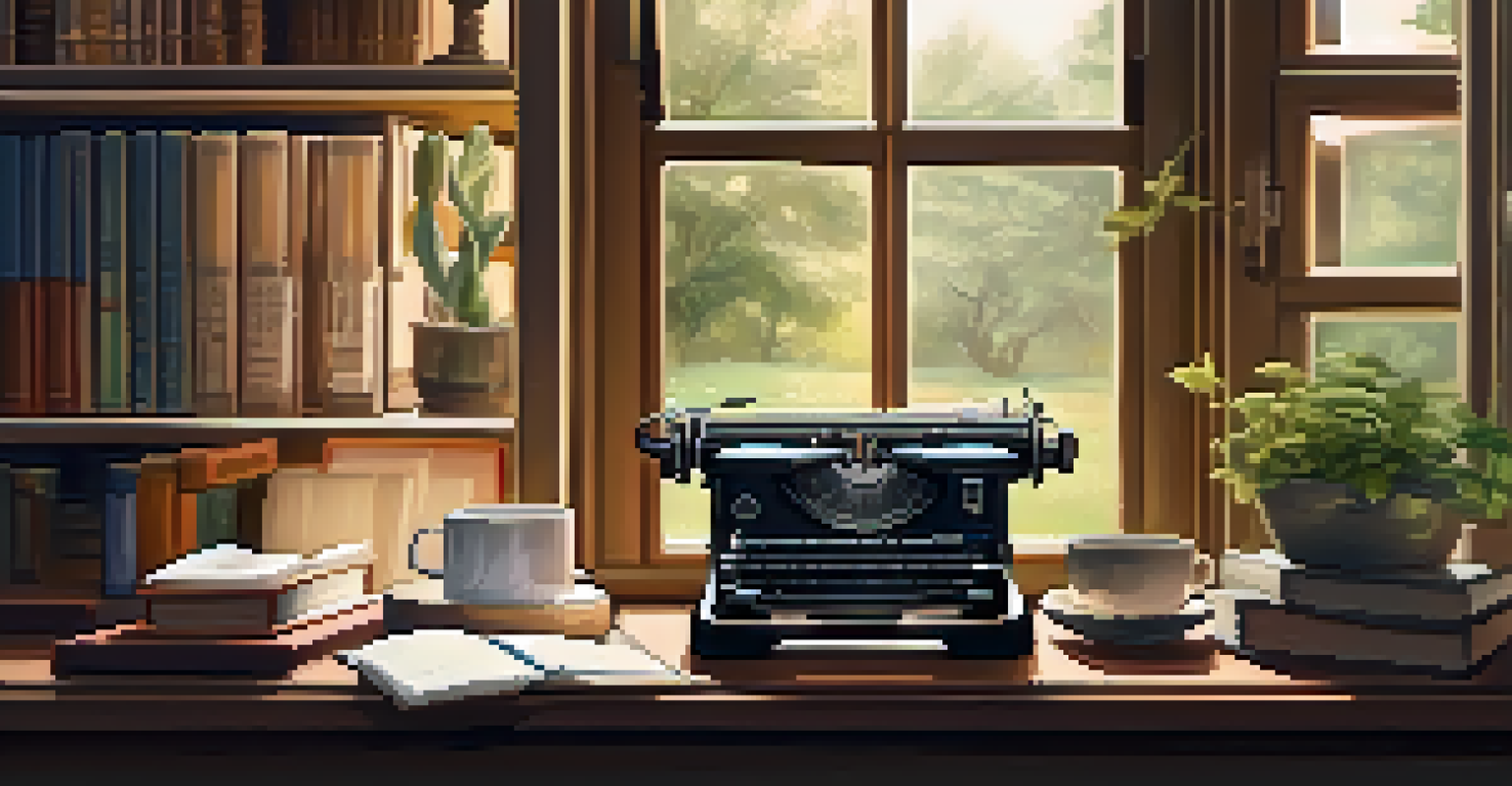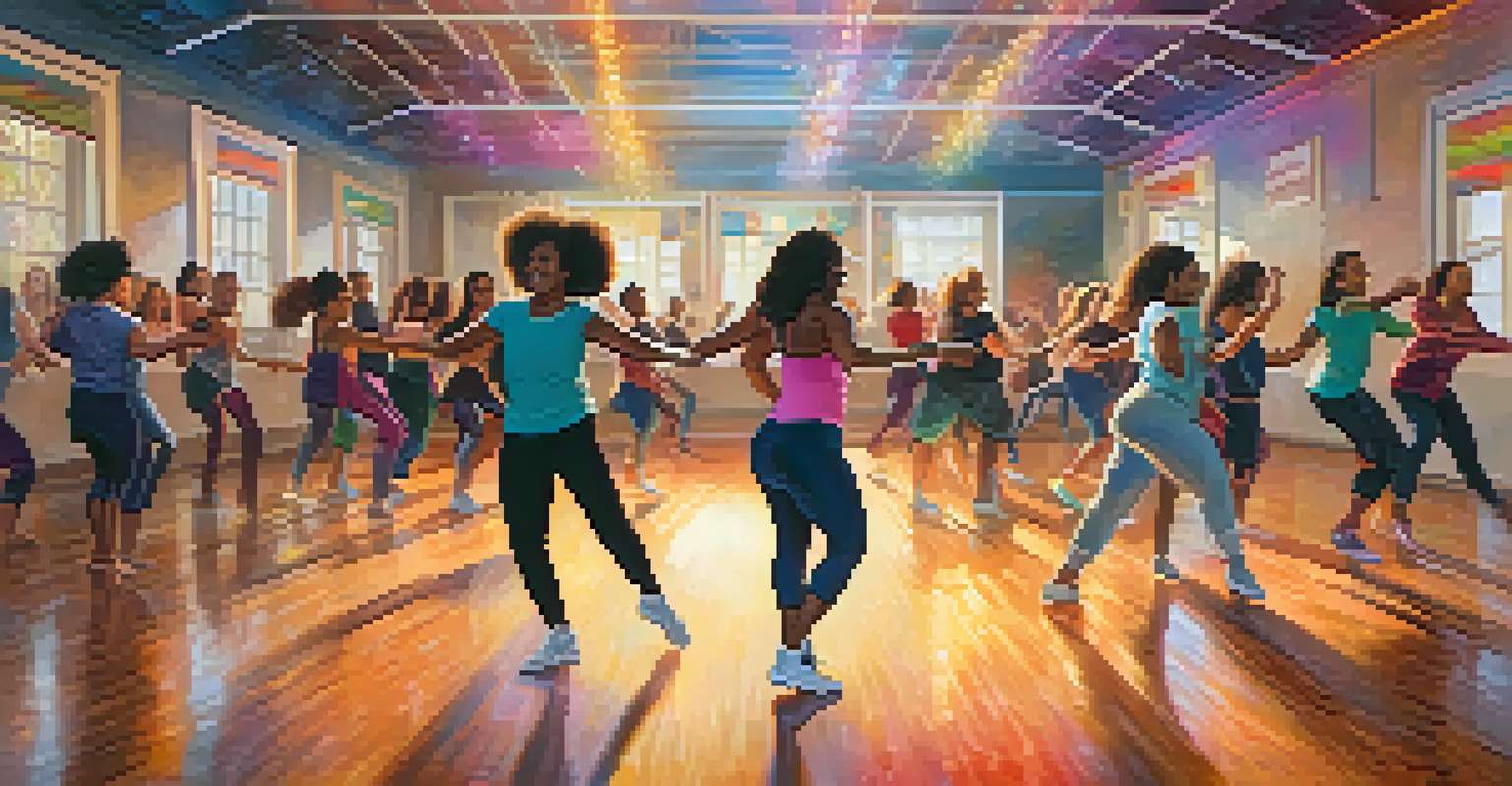The Role of Creative Expression in Managing Anxiety Symptoms

Understanding Anxiety and Its Impact on Daily Life
Anxiety is more than just feeling worried; it's a complex emotional state that can greatly affect daily functioning. People experiencing anxiety may find themselves overwhelmed by fear and apprehension, often leading to physical symptoms like a racing heart or sweating. This pervasive condition can hinder relationships, work performance, and overall quality of life, making it essential to explore effective management strategies.
Art is the most beautiful of all lies; it is a way to express the inexpressible.
As anxiety levels rise, individuals often struggle to express their feelings, leading to a cycle of isolation and increased anxiety. It's crucial to understand that these feelings are valid and that seeking healthy outlets can pave the way for relief. By breaking down emotional barriers, individuals may discover new ways to cope with their anxiety.
Creative expression emerges as a powerful tool in managing anxiety symptoms. Through activities like writing, painting, or music, individuals can channel their emotions into something tangible, promoting healing and self-discovery.
The Therapeutic Benefits of Art and Creativity
Engaging in creative activities has been shown to have therapeutic benefits that directly impact mental health. Art therapy, for instance, encourages individuals to explore their feelings and emotions through visual expression. This process not only helps to externalize anxiety but also fosters a sense of accomplishment and purpose.

Creating art can serve as a distraction from anxious thoughts, allowing the mind to focus on the process rather than the anxiety itself. This shift in focus can create a mental space where individuals feel more in control and less overwhelmed. As they engage in creative outlets, they may also find moments of joy and relaxation.
Creative Expression Alleviates Anxiety
Engaging in art, music, writing, and movement provides therapeutic benefits that help manage anxiety symptoms and promote emotional well-being.
Moreover, the act of creating can stimulate the release of dopamine, a neurotransmitter associated with pleasure and reward. This chemical response can help alleviate feelings of anxiety, making creativity not just a pastime, but a potential pathway to emotional well-being.
Writing as a Tool for Processing Emotions
Writing is a form of creative expression that allows individuals to process their thoughts and emotions on paper. Whether it's journaling, poetry, or storytelling, writing can provide a safe space to explore difficult feelings. By articulating their anxiety, individuals can gain clarity and perspective.
Music can change the world because it can change people.
Many find that putting pen to paper helps to organize their thoughts, making their worries feel more manageable. This practice can also serve as a release valve for pent-up emotions, providing a sense of relief and understanding. Writing allows for reflection, which can be incredibly powerful in the healing process.
Additionally, creative writing workshops or prompts can offer structured ways to engage with anxiety. These guided exercises not only encourage expression but also build community among participants, fostering connections that can combat feelings of isolation.
Music and Its Calming Influence on Anxiety
Music has a unique ability to affect our emotions deeply, making it a valuable tool in managing anxiety. Listening to calming music can reduce stress levels and create a soothing environment, helping to ease anxious thoughts. The rhythm and melody can act as a gentle distraction, allowing the mind to find some peace.
For those who prefer a more active approach, creating music—whether through singing, playing an instrument, or composing—can be incredibly therapeutic. This form of expression allows individuals to channel their emotions into sound, creating a sense of empowerment and release. The act of making music can also foster mindfulness, as it requires focus and presence in the moment.
Community Connection Reduces Isolation
Participating in creative groups fosters a sense of belonging, which can combat feelings of isolation often associated with anxiety.
Additionally, music therapy has gained recognition as an effective method for managing anxiety symptoms. Professionals use tailored playlists and activities to help clients explore their feelings and develop coping strategies, showcasing the profound impact of music on mental health.
The Role of Dance and Movement in Anxiety Relief
Dance and movement can serve as liberating forms of creative expression, allowing individuals to connect with their bodies and emotions. Engaging in physical movement can release endorphins, which are known to boost mood and reduce stress. This connection between body and mind can help individuals feel more grounded and present.
Participating in dance classes or simply moving to music at home can be a joyful way to express oneself. This form of creativity encourages spontaneity and self-expression, providing an outlet for feelings that might otherwise be difficult to articulate. As individuals dance, they can experience a sense of freedom that counters the constraints of anxiety.
Moreover, dance therapy incorporates movement as a way to explore emotions and promote healing. By expressing feelings through movement, individuals can tap into their subconscious, uncovering layers of anxiety that can be addressed and transformed.
Crafting and DIY Projects as a Mindful Practice
Crafting and DIY projects can be incredibly beneficial for those struggling with anxiety, offering a hands-on way to engage creatively. The process of making something tangible can provide a sense of accomplishment and purpose, which is often lacking in moments of anxiety. Activities like knitting, woodworking, or scrapbooking can captivate the mind and foster a state of mindfulness.
When individuals focus on creating with their hands, they often enter a flow state—an experience where time seems to disappear, and worries fade away. This immersion in the craft can serve as a form of meditation, allowing for relaxation and mental clarity. Moreover, the repetitive nature of many crafts can be soothing and calming.
Mindfulness Through Crafting
Crafting and DIY projects encourage mindfulness and a sense of accomplishment, offering a hands-on approach to managing anxiety.
Additionally, completing a craft project can instill a sense of pride and achievement, countering feelings of helplessness that often accompany anxiety. Sharing these creations with family or friends can also reinforce social connections, providing support and encouragement.
Building Community Through Creative Expression
One of the most powerful aspects of creative expression is its ability to foster community and connection. Joining art classes, writing groups, or music ensembles can introduce individuals to like-minded people who share similar struggles. This sense of belonging can be incredibly comforting and reduce feelings of isolation often experienced with anxiety.
Participating in community creative projects or workshops can provide opportunities for collaboration and shared experiences. These interactions can help individuals feel less alone in their journey, as they connect with others who understand their challenges. The collective energy of creating together can also be uplifting and motivating.

Moreover, sharing creative works publicly, whether through galleries or online platforms, can open doors for dialogue about anxiety and mental health. By normalizing these conversations, we can break down stigma and encourage others to explore their own creative outlets as a means of coping.